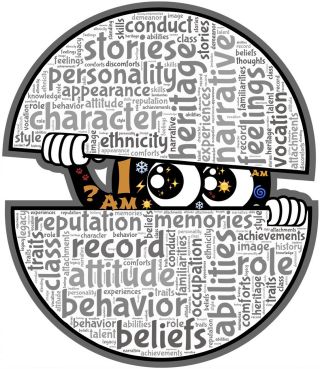Empathy
Self as Empathic Instrument for Change
Integrative empathy in the organizational development journey.
Updated June 26, 2023 Reviewed by Gary Drevitch

I first heard the phrase self as instrument at the IODA World conference 2017. I was intrigued. As an organizational development (OD) practitioner I was aware of inner resources required for my work. When I felt present and clear, participants were focused and innovative. However, when my energy was low or I was distracted, teams could be similarly dispersed and uncreative. My state of being was so important for the outcome of projects.
Self as Instrument was one of many concepts described by Dr. Mee-Yan Cheung-Judge, years after she highlighted the topic in her seminal 2001 article (Cheung Judge, 2001, 2012). In her article she demonstrates the importance of effective relationships in OD work and the use of self as an instrument to achieve this. She goes on to describe elements of the self as hardwired and constant, with others open to evaluation and modification.
Seemingly intangible aspects of self guide whether we lead remarkable projects or just maintain mediocrity.
Yet, are they intangible? Just before her untimely death in 2022, Cheung-Judge, with David Jamieson, published the Global Use of Self (UoS) Research Report. This work grounds Use of Self theory and practice in data, recording patterns and themes from practitioners. It also explores learning opportunities to support OD professionals growing their practice.
We locate integrative empathy alongside factors emerging in their report. It is evident from the report that practitioners have a heightened awareness of what is required, and a clear articulation of what is lacking, for best Use of Self. They, however, communicate the elusive nature of the requirements in difficult situations. We hope to highlight a learning opportunity with integrative empathy for best Use of Self.
Integrative empathy and best Use of Self
Best Use of Self requires that you are able to maintain a multi-faceted presence—amongst other factors, to be able to self-manage in emerging situations with relationship-centred values and behaviours and self/other awareness. These can be automatic when dealing with agreeable circumstances. But, as the research shows, it is tricky with people who challenge you, and requires a unique set of skills.
Integrative empathy applies principles and practices of embodied cognition with five empathy skills to bring undivided attention with self-empathy; create and maintain connection with kinesthetic empathy; foster mutual understanding with reflective empathy; diversify perspectives with imaginative empathy; and ensure actionable outcomes with empathic creativity. Corresponding behavioural consequences hold space for emerging situations and build relationship-centricity and self/other awareness.
Self-empathy to hold space for emerging situations
With self-empathy we show up to hold space for and pay attention to self, others and the environment. We make space in ourselves to be present.
In the Global UoS Research, participants placed top priority on developing self-awareness, and the research illustrated an advanced level of self awareness. Participants described at length the internal barriers to best Use of Self: lack of confidence, fear, and uncertainty about how to leverage personality and how to manage default orientation towards others. They also described being stuck in certain attitudes, stuckness in general, and triggers in themselves activated by others.
Awareness of shortcomings and desired outcomes are important, yet don’t lead to change.
For transformation we need to explore thoughts, feelings and embodied responses, to understand the reactions and blocks, discern what is required for the situation and invoke embodied requirements for each unique context. With self-empathy, we bring calm to our inner world. We sense and make sense of how we show up and suspend any emerging judgments. Then we identify how we would like to show up and intend and invoke the resources we need. This practice prepares us to hold space for an emerging situation.
Empathy for relationship-centricity and self/other awareness
Effective OD work requires a good understanding of others. In integrative empathy, this happens with three empathy practices. Self-empathy is a necessary practice to prepare oneself for empathy with others. With kinesthetic, reflective, and imaginative empathy we connect with, understand, and consider the perspectives of others. Thereafter, we garner insights with empathic creativity.
- Kinesthetic empathy brings non-verbal awareness to self and other. We participate in somebody’s movement, or sensory experience of movement, aiding connection and awareness of how we influence each other’s physical space.
- Reflective empathy enables clarification and intensified listening through literal and advanced reflective dialogue. It helps to explore issues without losing sight of self.
- Imaginative empathy uses imagination and ‘as-if’ acting to understand and experience the perspectives of others and explore an issue from multiple perspectives. It enables a practitioner to gain an imagined experience of the perspectives of another.
- Empathic creativity gathers insights into a guide-to-action. It helps to ground processes in practicality leading to next steps and actionable outcomes.
Conclusion
Integrative empathy helps practitioners identify, own, work with, and navigate barriers to one’s best Use of Self while enhancing understanding of others. As a habitual practice, it guides a fluid flow of attention between self and other aiding connection, understanding, perspective taking and leading to actionable outcomes. With self-empathy we are able to tackle and transform internal barriers and make sense of personal hooks and triggers. With Empathic Intervision, five empathy practices unite in a peer learning and support routine to help grow one’s empathy in community of practice.
The potential of the self is great. If we can invoke the potential not yet expressed, how much more effective can we be?
References
Cheung-Judge, M.Y. (2001). The self as an instrument- A cornerstone for the future of OD. OD Practitioner 33(3). 11-16.
Cheung-Judge, M.Y. (2012). The self as an instrument. OD Practitioner, 44(2), 42-47.
Cheung-Judge, M.Y. & Jamieson, D.W. (2020). Global Use of Self (UoS) Research Report. Available from: jami1396@stthomas.edu.




